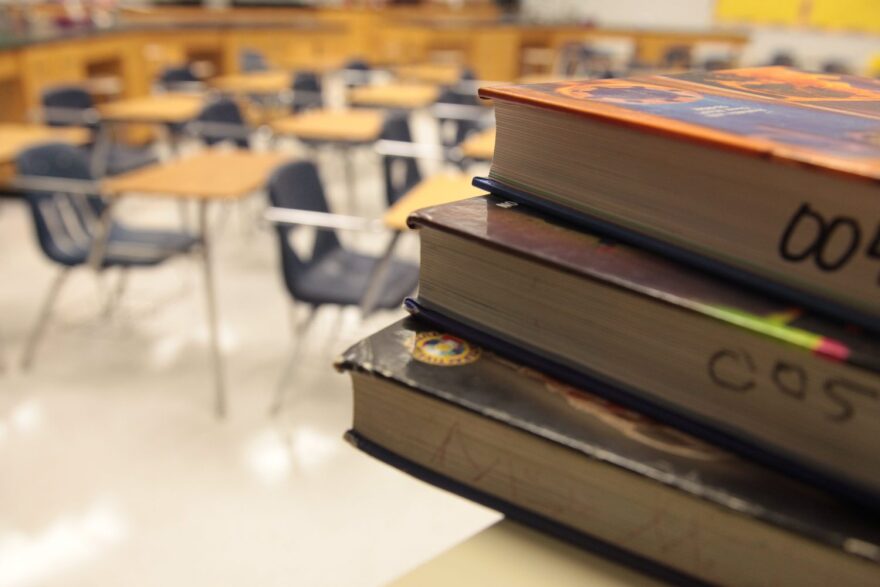WASHINGTON — The problem of students habitually missing school varies widely from state to state, with about one-third of students in the nation's capital absent 15 days or more in a single school year, according to an Associated Press analysis of government statistics.
At the other end of the spectrum, Florida had the lowest rate of chronic absenteeism, 4.5 percent in the 2013-2014 school year.
Overall, the national average of chronic absenteeism was 13 percent, or about 6.5 million students, the Education Department said.
"Chronic absenteeism is a national problem," Secretary of Education John B. King Jr., said in a statement on Wednesday. "Frequent absences from school can be devastating to a child's education."
Bob Balfanz, a research professor at Johns Hopkins University and director of the Everyone Graduates Center, called the numbers disturbing.
"If you're not there, you don't learn, and then you fall behind. You don't pass your classes. You don't get the credits in high school and that's what leads to dropping out," Balfanz said in an interview.
The report was the first release of chronic absentee figures from the department.
"If you're not there, you don't learn, and then you fall behind. You don't pass your classes. You don't get the credits in high school and that's what leads to dropping out," Balfanz said in an interview.
The report was the first release of chronic absentee figures from the department.
The Obama administration began a program last fall that now works with states and local groups in 30 communities to identify mentors to help habitually absent kids get back on track. As part of the effort, the White House said Wednesday that a New York-based company, STATE Bags, was donating 30,000 backpacks to children being mentored in the program.
NBA star Kevin Durant is working with the administration on the initiative. "Sometimes the reasons come down to not having what you need to be present and ready ... like a book bag, school supplies, or the support of a caring adult," Durant said in a statement.
Detroit is among the new communities to sign up for the My Brother's Keeper Success Mentors Initiative.
Of the 100 largest school districts by enrollment, the Detroit City School District had the highest rate of chronic absenteeism. Nearly 58 percent of students were chronically absent in the 2013-2014 school year.
In Washington, D.C., Michelle Lerner, press secretary for the District of Columbia Schools, said the district is taking an "all-hands-on-deck approach" to try to ensure that students attend school.
She said the school system last year met its "in-seat attendance goal — a measure that shows how many students are actually present on any given day — of 89.5 percent," which she said was an improvement over the previous two school years.
"But we still have more work to do to ensure more students continue to be in school every day," Lerner said.
Elsewhere around the country, Washington state and Alaska had chronic absentees rates hovering around one-quarter of students with that level of absences.
According to AP's analysis, girls were just as likely as boys to habitually miss school. Nearly 22 percent of all American Indian students were reported as regularly absent, followed by Native Hawaiians at 21 percent and black students at 17 percent. Hispanic and white students were close to the national average of 13 percent.
Students are regularly missing school for lots of reasons, Balfanz says. Many are poor and could be staying home to care for a sibling or helping with elder care. Others are avoiding school because they're being bullied or they worry it's not safe. And then, there are some students who simply skip school.
Schools should be creating welcoming environments to make students feel wanted each day, Balfanz says. They also need to build relationships with the kids who are regularly absent to figure out what's keeping them away, he said.
As part of its Civil Rights Data Collection, the department surveyed all public schools in the country, covering over 95,000 schools and 50 million students. Roughly one in seven of all K-12 public schools nationwide reported having not a single chronically absent student that year.
Chronic absenteeism is one of several topics covered in the data collection. It also looked at school discipline and high-rigor course offerings.
Other figures from the report:
—Black preschool children are 3.6 times as likely to get one or more out-of-school suspensions as their white counterparts.
—Black children represent 19 percent of preschoolers, yet they account for 47 percent of preschool kids getting suspended.
—White students make up 41 percent of preschoolers, and 28 percent of preschool kids with suspensions.
—Nationwide, almost half of high schools offered classes in calculus, and more than three-quarters offered Algebra II.
—33 percent of high schools with substantial black and Latino enrollment offered calculus. That compares to 56 percent of high schools with low numbers of black and Latino children that offered calculus. Similar gaps were seen for physics, chemistry and Algebra II.



